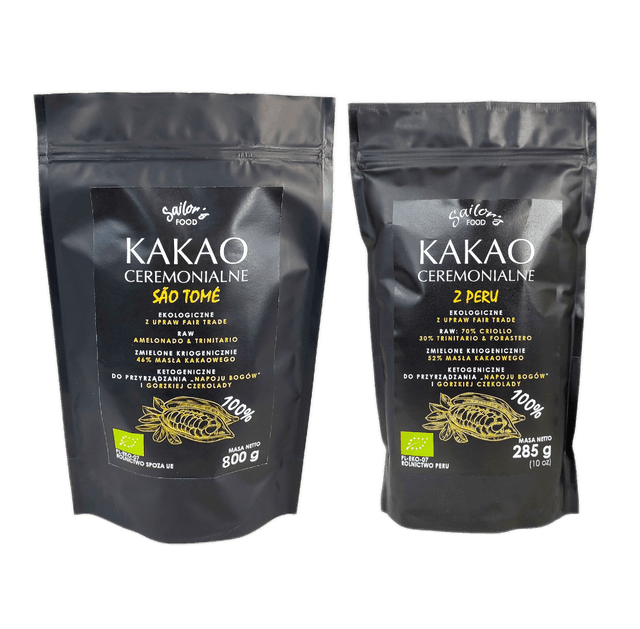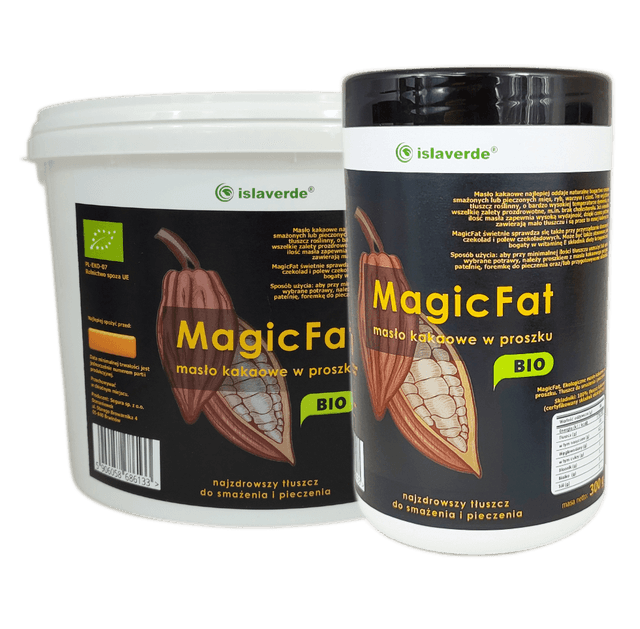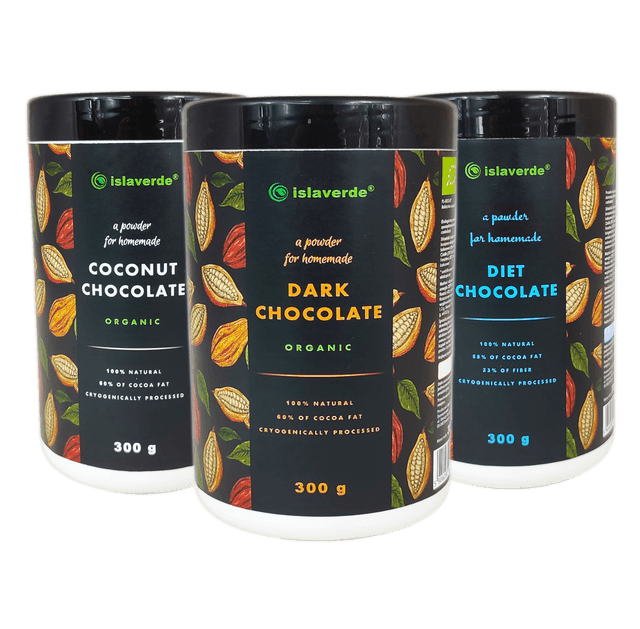Ceremonial cocoa
< Back to home page
The cocoa beans that we use in our production processes come from the best crops of three countries in South America and the Caribbean: Peru, Ecuador and the Dominican Republic, as well as from the island of São Tomé, located in the Gulf of Guinea. They are a mixture of the most popular spesies such as Criolo, Forastero, Trinitario and Amelonado.
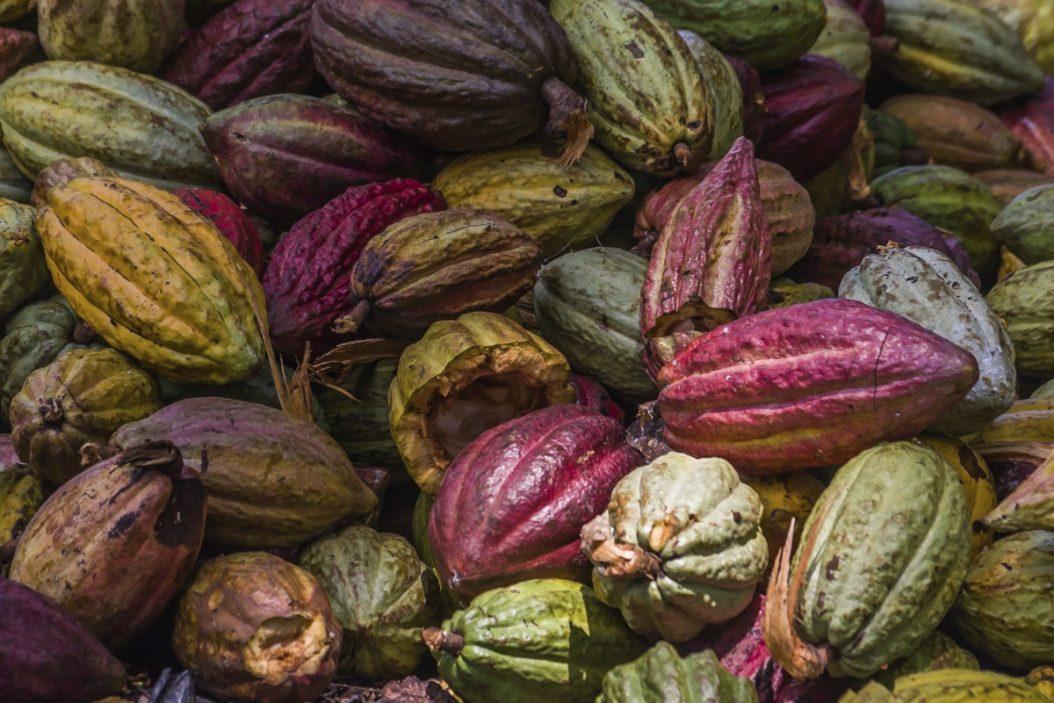
We produce ceremonial cocoa in our factory near Warsaw. They are probably the only high-fat cocoa powder in the world, obtained by cryogenic grinding of beans at -80°C. Only such grinding allows for perfect grinding of dried and fermented cocoa beans with their natural fat.
The resulting cocoa mass has 46% to 52% fat, called cocoa butter. To distinguish it from the commonly used skimmed and ground cocoa with a fat content of 10-15%, non-skimmed cocoa was called ceremonial.
We grind cocoa beans from Ecuador, the Dominican Republic and São Tomé together with the husk, which makes them products with a high fiber content. We recommend them as more dietary. Ceremonial cocoa from Peru, whose raw material is the so-called Cocoa nibs (raw, crushed cocoa beans, but without the husk) have a slightly higher cocoa butter content (52%) and lower fiber content. The nutritional values of individual species are presented below. To obtain the Andean "drink of the Gods" (el elixir de los Dioses), just add a few tablespoons of cocoa to hot water and cook, stirring, for about 10 minutes over very low heat. Recommended proportions are 20 - 30 g of powder (4 - 6 tablespoons) per cup of water. More experienced cocoa enthusiasts can increase the portion of powder to up to 40 g to achieve a state of bliss.
For people attached to the traditional form of ceremonial cocoa, we also recommend our 30-gram slices and 150-gram flat blocks with the logos of the countries of origin
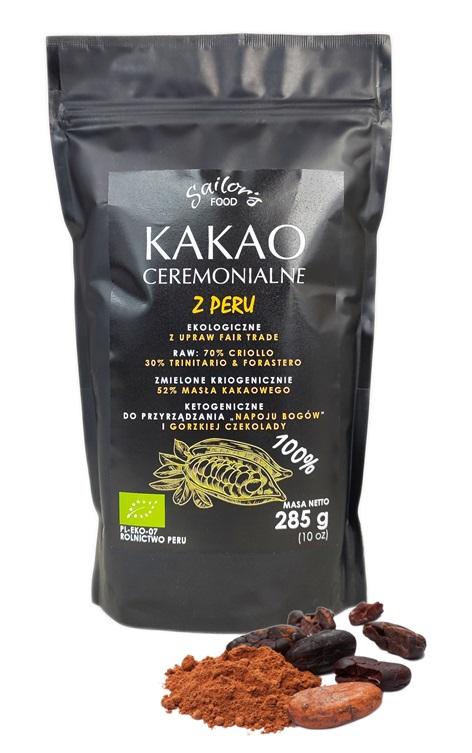
It is also easy to create delicious homemade chocolate using Ceremonial Cocoa in powder form. To do this, simply add 10 - 15% of Magicfat cocoa butter to the cocoa powder, heat the powder slightly in a water bath* and then add honey, dried fruit, spices, nuts and coconut flakes. After obtaining a thick mass, the chocolate can be cooled in silicone molds.
Ready-made chocolate bases, offered as Dark, Coconut and Diet chocolate, which are mixtures of ceremonial cocoa powder, cocoa butter, coconut or cocoa husk, are offered especially to people following a Paleo, Ketogenic or LCHF (Low carb, high fat) diet.
*Water bath: place the vessel with cocoa powder in a pot of boiling water and mix/knead the powder until its consistency becomes semi-liquid (approx. 3-4 min).
Our cocoa has a high energy value of up to 550 kcal/100 g and is a ketogenic product. Instead of a meal, just drink a cocoa drink with 40 g of powder (220 kcal) to feel full for at least 2-3 hours. The main advantage of cocoa is its extraordinary nutritional properties, combined with an increase in serotonin levels in the body immediately after its consumption. Serotonin is a neurotransmitter operating in the brain, responsible for improving concentration and mood, and adding optimism in times of exhaustion and stress

